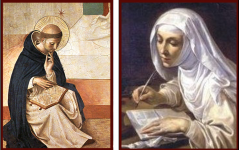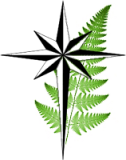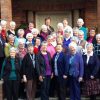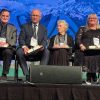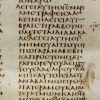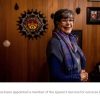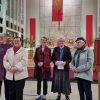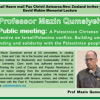Reflection Question: What inspiration does St. Martin’s life of prayer and service offer to us after living with Covid-19 for almost three years and the other major issues in our society?
St Martin de Porres 1579 – 1639
This humble Dominican lived fully in the present moment, anchored both in God through intense prayer and suffering, and in the very real world of the poor through acts of extraordinary kindness to the sick and suffering.
The best history of Martin’s life is currently out of print (1992). San Martin de Porras by Juan Antonio del Busto Duthurburu. Many sections have been translated by Brian Pierce OP, a friar who has lived and ministered in Peru, Honduras and Guatemala. I am greatly indebted to him and his small volume, St Martin de Porres A Saint of the America’s, 2004. This summary of Martin’s life is not for publication but does list Sources.
In 1579, Martin de Porres was born in Lima, Peru, where he spent nearly all of his life of sixty years. He was born into a world that idolized power, violence and gold. The Kingdom of Spain had conquered the indigenous Indians who lost their freedom, their lands and their sovereignty. Lima was a boom town with some 2000 families of pure Spanish blood, about 25,000 South American Indians, some 40,000 Negroes of African origin and great numbers of mixed blood from all three races. Society was highly stratified. Peru was ruled from Spain, legally by the King and economically by the Spanish Board of Trade. Also, to the Spanish mind, a division between Church and State was unthinkable.
Dominicans had made their mark there as early as 1510 when 12 Dominican Friars arrived from Spain. Antony de Montesinos denounced the cruelty of the Spaniards, he also influenced one Bartholomew de Las Casas, then a diocescan priest, to become a Dominican. Las Casas later became a bishop and dedicated his whole life to the cause of the native Indians. The city of Lima, after a very tumultuous start became the political and commercial capital and a centre of culture. In 1551, the Dominicans founded the University of St Mark there. It was the first university to be founded in all the territory of the two Americas. And the first saint, Dominican Rose of Lima was baptised in the same church as Martin just six years later.
I mention these details because our friend Martin and his younger sister Joanna were born to Ana Velasquez, a freed African slave from Panama. The “father unknown” on Martin’s baptismal certificate was a Spanish nobleman and elite soldier, Juan de Porres who deserted their mother and the children for some time.
Brian Pierce states that it is important for us to feel the ‘social hell’ that Martin grew up in. He was frequently called a mulatto dog during his early life. While this saddened him, he learned to accept such derision and unite himself with the suffering Christ who he knew, loved him so much.
Martin grew up with God’s grace and little else. The fighting and contempt around him taught him to be peaceful, and become a powerful peacemaker. Instead of being bitter and angry he saw an opportunity for holiness. As Brian Pierce writes “he gave the chaos and poverty of his surroundings to God, who took the Spanish and African threads of his heart and wove them into a beautiful tapestry of divine love”. The selfishness around him made him entirely selfless. In place of contempt for his neighbour, he grew to see Christ in every person and remained amazingly humble.
Suffering was part of his life from the beginning and it helped him identify with the suffering Christ from a very young age. As a child he had seen African and Incan slaves chained together and being led through the streets near his home to be sold to Spanish colonists for work in the gold and silver mines His grandparents had been brought over like animals in a ship from Africa.
When he was ten his father visited the family, had a change of heart, acknowledged the children as his own, took them home to Ecuador and gave them two years formal education. Martin was recognised as being highly intelligent and told his father he wanted to become a doctor so Dr de Rivero was approached. The latter agreed to have Martin as an apprentice as herbalist/pharmacist and as a barber and minor surgeon. Only three years later the Doctor is known to have said “That’s a most extraordinary boy! He has learned all I know. I can teach him no more. He is amazing!”
At fifteen years old, Martin had done much practical doctoring on both humans and animals and was known throughout the city of Lima for his skill and virtue. He knew it was time to make a life decision and so he applied to be a servant or donado at one of the four large Dominican priories (300 friars) in the city. This was a very deliberate choice on Martin’s part, but we must also remember that racist laws of the time prevented blacks and Indians from becoming religious and priests. I quote “nowhere in the provinces of the Indies may there be received into the holy habit and profession of the Order those known as mestizos.” (having a parent of Indian or African blood.) Martin knew he had an inner freedom from his constant prayer – he knew he was made in the image of God and that the Holy Spirit dwelt in his heart.
His father was not pleased that his son chose to be an unpaid servant rather than a priest. Martin had chosen to remain voluntarily poor using his strength to care for others especially the poor and sick. This was the lowest, most humble position he could find to be an instrument of God’s healing love for all living beings. Today he is recognised as a holistic healer because he mixed ancient African and indigenous medicinal wisdom with his faith in Jesus Christ. Martin’s aim was the wellbeing of body, mind and spirit. In time Martin became the Chief Infirmarian. It is even said that his example changed the tone of the city so that the people became proverbial for their faith and charity.
Martin entered deeply into the suffering of others. His recognition of Christ in his neighbour made him see each person individually. Each day he cared first for the sick at the priory, then sought the sick in the streets. He would often say to those seeking his healing presence: “I cure you; may God heal you.” And while he cared for the sick he taught them the Catechism.
Martin organised his begging for the poor on Tuesdays and Wednesdays, on Thursday and Friday he begged for the support poor priests and students. On Sundays he begged money for blankets and clothes for the poor. Quite extraordinary sums of money passed through his hands. Something about Martin made it possible for people from the wealthier classes to give him, – a Coloured servant large sums of money for those less fortunate than themselves. He has been dubbed patron saint of Lottery Winners.
His aim as always was to alleviate distress so that people could accept the love and mercy of God. And always for anyone who praised him there was the answer “Why do you praise me? I am only a Coloured servant.” Martin provided for the poor of all social classes, for the destitute, the orphans and another special group – the young girls who had no dowries, and who, according to the custom of the day, could neither marry, nor enter a convent. By making the rich see they were only trustees for their wealth he linked together the rich and the poor and made relief for the poor be seen not as a matter of vanity or condescension but of conscience. There was no social conscience in society at that time. Martin would have agreed with the statements made by notable Dominicans in our times – Fr Gustavo Gutierrez affirmed “It is very clear we must be in solidarity with the poor.” And Fr Bruno Cadore responded, “We have to consider solidarity is not an action, it’s a way of life.” This certainly fits any description of the life of Martin de Porres.
St Martin lived his life in the light of Christ. He followed the inspiration of St Dominic in his life of frequent prayer and penance and he relied daily on the Mother of God for help to care, heal and provide for the poor. He lived out his life as a Dominican for 45 years – a soul of love and service to quote Mary O’Driscoll OP. His pattern of prayer followed closely on that of St Dominic, especially his devotion to the Eucharist and the hours of silent prayer before the crucifix. We are told he prayed 4 hours daily except that these hours were usually during the night. During the day he lived out the Gospel, always pointing away from himself – he let God’s grace work through him.
This continuous devotion to his mission did not go unnoticed by his community. After nine years in the community the Prior invited or really commanded him to make his Solemn Profession which took place on 2 June 1603. St Dominic must have been delighted at this dispensation! For Martin, there was no real distinction between being a donado or a professed brother. His live never wavered but continued as before. It would seem though that Martin chose to wear his donado habit rather than that of the professed brother – this fact is not evident in most of the artistic impressions made of him in later years.
In 2014, Celia Cussen’s new book correctly identifies Martin as a donado. This recent research by Fr Augustine Thompson OP is listed in IDI N 554, September 2016.
A final point: Dominic had hopes of going to convert those in far off lands as well as dealing with the heresy at home. Martin also held this hope in his heart. During his lifetime Blessed Alphonse Navarrete and more than one hundred Dominican missionaries died for the faith in Japan. Nine years after Martin died, the Dominicans gave China its first missionary and first bishop and later its first martyr, Blessed Francis de Capillas. Of course, Martin lived his whole life in his monastery in Lima.
His life is the story of an inspiring Dominican saint: an illegitimate mulatto baby is born in a conquered colony of Spain; as a child he falls in love with God and with the poor; Martin becomes a Dominican brother and dies (probably of typhus), a holy man 60 years later in 1639. His posthumous career shows him venerated especially in the Americas and in English speaking countries.
Fortunately, in 1660, the Archbishop of Lima began the process for collecting the depositions regarding Martin’s virtues and sanctity of life. Many of his companions were still alive to present personal accounts. A total of 323 years divided his death and his canonisation by Pope John XXIII on May 6 1962. He was declared Patron of Social Justice, Martin of Charity, Martin of Joyful Nonviolence, and Spiritual Father of the Poor. Since then the Southern Province of Dominican Friars including 11 states of North America, honour him as Patron of the Dominican Mission Foundation in Mexico, Guatemala, Kenya and the Philippines.
Reflection Question: What inspiration does St. Martin’s life of prayer and service offer to us today?
Thanks to Carmel Walsh OP for providing this reflection.
Sources:
Guiliana Cavallini, St Martin de Porres: Apostle of Charity (Rockford, Ill.: TAN Books and Publishers, Inc.), 1979
Celia Cussens,Black Saint of the Americas: The Life and Afterlife of Martin de Porres, Cambridge Uni. Press, 2014. A major work and the first “historical” study of St Martin.
Busto Duthurbutu, Juan Antonio, 1992 Catholic University of Peru, 1992.
Alex Garcia-Rivera, St. Martin de Porres: The “The Little Stories” and the Semiotics of Culture (New York: Orbis Books, 1995.
Brian J Pierce, OP Martin de Porres, A Saint of the Americas, Ligouri, Missouri, 2004.
Image: Wikimedia Commons
